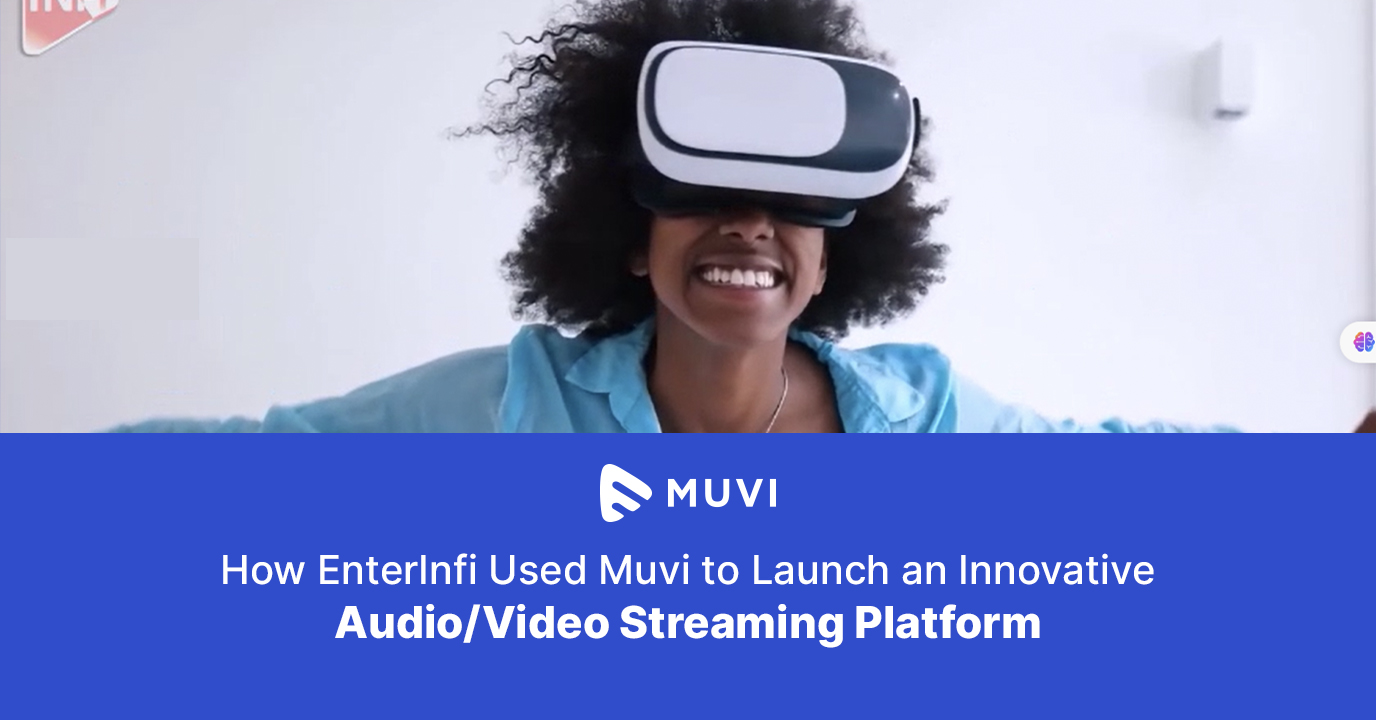Video on Demand is one of the primary sources for any content creators and publishers to engage with a vast audience.
Video-on-Demand market worldwide has reached a revenue of US$182.40 billion. It has shown an Annual Growth Rate of 8.27% and is expected to cross US$231.50 billion by 2027. The number of users in the Video-on-Demand market is projected to reach 3.4 billion users by 2027. Below graph represents the projection of revenue from Video on Demand through different monetization models.

Audiences nowadays are looking for a diversified content library and to fulfill the same, content creators and various media distributors cannot depend upon a single video monetization model because it may not grab viewer’s attention and their wallets.
Adoption of various monetization models such as Ad-supported Video on Demand (AVOD), subscription-based services (SVOD) and Transactional Video on Demand (TVOD) has already been in the market for a while. However, the competition among various online video streaming platforms has given birth to a new model called HYBRID MODEL, that includes more than one revenue stream.
Hybrid video on demand has given streaming businesses a strategic response to the growing preferences and expectations of audiences. Among various other monetization models gaining popularity, HVOD is one of them.
Let’s take a closer look at What is HVOD and what are its benefits.
What is a Hybrid Video on Demand (HVOD)?
Hybrid Video on Demand (HVOD) is the method of integrating multiple monetization strategies into a single platform. Unlike traditional models that rely solely on subscription fees or advertising revenue, HVOD blends the best of Subscription Video on Demand (SVOD), Advertising Video on Demand (AVOD), Transactional Video on Demand (TVOD), and Premium Video on Demand (PVOD) to offer viewers unparalleled flexibility and choice.
This innovative approach ensures that viewers have access to a wide range of content while accommodating diverse preferences and economic circumstances. Whether users prefer the uninterrupted viewing experience of SVOD, the free-to-access content supported by AVOD, or the option to rent or purchase specific titles through TVOD, HVOD caters to everyone’s needs.
HVOD’s adaptability is particularly valuable during economic downturns, allowing users to tailor their viewing habits according to their financial situation. By embracing this hybrid model, streaming platforms can expand their reach to a broader audience across different regions, ensuring that entertainment remains accessible and inclusive.
How does HVOD differ from traditional AVOD and SVOD?
AVOD | SVOD | HVOD |
AVOD relies on advertisements to generate revenue. Users can access content for free but must endure periodic ads during playback. | SVOD requires users to pay a subscription fee to access content. | HVOD combines elements of both AVOD and SVOD. |
Content availability is usually wide, as it’s supported by advertising revenue. | Content libraries are typically large, offering a wide range of movies, TV shows, and other media. | Users can access some content for free with advertisements, like AVOD and have the option to pay for a subscription to access premium content without ads, like SVOD. |
Users do not pay for access but instead “pay” by watching ads. | Users enjoy an ad-free experience after paying the subscription fee. | Audiences can choose between watching ads to access content for free or paying a subscription fee for an ad-free experience and possibly exclusive content. |
Benefits of Using HVOD
HVOD, or Hybrid Video-On-Demand, is a model that combines elements of both subscription-based video-on-demand (SVOD) and advertising-supported video-on-demand (AVOD) platforms. Here’s a detailed explanation of the benefits of using HVOD:
Multiple Revenue Streams:
HVOD allows content providers to generate revenue from multiple sources. Subscriptions provide a steady stream of income from users who are willing to pay for an ad-free experience or premium content. Additionally, advertisers pay to display targeted ads to users, further increasing revenue. This diversified revenue model can help mitigate risks associated with relying solely on one revenue stream.
Easy Acquisition of New Users:
HVOD platforms often offer a freemium model, where users can access a limited selection of content for free while being exposed to ads. This attracts users who might be hesitant to commit to a subscription but are still interested in accessing content. Once users become familiar with the platform and its content offerings, they may choose to upgrade to a subscription to enjoy an ad-free experience or access exclusive content. This ease of access helps in acquiring and retaining users.
Flexible Content Consumption:
HVOD platforms offer flexibility in how users consume content. Subscribers can enjoy uninterrupted viewing experiences without ads, while non-subscribers can still access content for free, albeit with intermittent ad breaks. This flexibility caters to a wide range of users with varying preferences and financial capabilities. Users can choose the model that best suits their needs, whether it’s opting for a subscription for an ad-free experience or enjoying free content with occasional ads.
Tailored Ads:
HVOD platforms leverage user data and analytics to deliver targeted ads, enhancing the relevance of advertisements to viewers. By analyzing user preferences, viewing history, and demographic information, platforms can serve ads that are more likely to resonate with viewers, leading to higher engagement and conversion rates for advertisers. Tailored ads not only benefit advertisers by maximizing the effectiveness of their campaigns but also enhance the overall viewing experience for users by reducing irrelevant or repetitive ads.
Cost Efficiency:
HVOD combines the benefits of both subscription-based and transactional models. Users can access a library of content through a subscription fee while also having the option to pay for individual titles. This flexibility allows users to control their spending based on their viewing habits.
Launch Your Own HVOD Streaming Platform with Muvi!
Muvi One is the world’s leading all-in-one online video platform that helps you create your own video streaming service seamlessly! Yes, you heard it right! Muvi One can help you build your own platform like Netflix, Amazon Prime, or ESPN+ and distribute content to a worldwide audience. From eLearning to entertainment and sports deliver on-demand and live videos instantly! Our customizable multi-device video streaming platform helps you easily monetize your contents with a diverse variety monetization model available.
Muvi One comes with a variety of monetization models such as Subscription-based video on demand, Ad-based video on demand, Pay-per-view, hybrid, coupons and many more! Start your free trial now!
FAQs
Hybrid Video on Demand (HVOD) is the method of integrating multiple monetization strategies into a single platform.
HVOD combines elements of both AVOD and SVOD whereas AVOD relies on advertisements to generate revenue and SVOD requires users to pay a subscription fee to access content.
- Multiple Revenue Streams
- Easy Acquisition of New Users
- Flexible Content Consumption
- Tailored Ads
- Cost Efficiency
You can launch your own HVOD Platform seamlessly with Muvi One.
Customization feature of Muvi One helps you personalize the user experience with HVOD!

















Add your comment